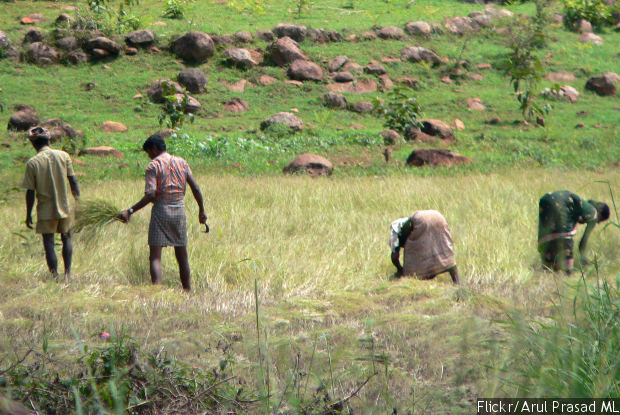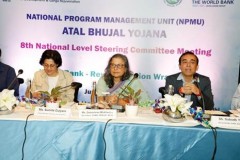- Mother’s Recipe Launches ‘Hearty Roots’ – India’s First Healthy, Ayurveda-Inspired Pickle Range
- Bruce Blizard Releases Deeply Moving Novel A Better Place, A Gripping Tale of Family, Survival, and Truth
- Mia by Tanishq Expands Its Retail Presence With a Brand New Store In Kamala Nagar, New Delhi
- Teklima Ltd Enhances Comfort and Efficiency with Expert Air Conditioning Services in Kent and Tunbridge Wells
- Galaxy M36 5G with Advanced AI Innovations in Mid-Segment Smartphones Goes on Sale in India
- Olson’s Walk-Off Hit Gives N.L. All-Star Game Triumph In Strat-O-Matic Simulation
- Army Navy USA Launches Rugged & Ready Jungle Boots for Outdoor and Tactical Use
- India Health 2025 opens with 300+ brands and 8,000+ stakeholders at Bharat Mandapam, New Delhi
- DigitalPress Launches Enhanced Printing Solutions Platform to Revolutionize UK Print Industry
- Rarete Jewelry Unveils New “Gifts for Mom” Collection
- Kia India Appoints Atul Sood as New Sr. VP of Sales & Marketing
- Crestshield Windows Expands Quality Double Glazing Services in Crystal Palace and Beckenham
- URPhone Store Opens New International Drive Branch for Cell Phone Repair in Orlando
- Klook's 'The Best You' Campaign Inspires Personal Transformation Through Travel, Featuring Bharti Singh
- Children from SOS Children Villages India Lead Street Plays to Spark Community Awareness Across the Country
 Mail to a Friend Mail to a Friend |
|
     |
NE Monsoon Worst In 140 Years, 144 Farmers Dead, Tamil Nadu Declares Drought

The Tamil Nadu government declared a drought on January 10, 2017, after 144 farmers ended their lives (according to media reports here and here) between October and December, 2016. As many as 106 farmers were reported to have committed suicide in one month, according to this notice issued by the National Human Rights Commission to the state government on January 5, 2017.
The retreating northeast monsoon?usually unnoticed in India owing to the singular importance of the larger southwest monsoon?in 2016 was the worst ever over the last 140 years, according to Indian Meteorological Department (IMD) records, since 1876.
?It is an unprecedented situation,? S. Panneerselvam, Professor and Head, Agro Climate Research Centre, Tamil Nadu Agriculture University, Coimbatore, told IndiaSpend. ?It has severely affected 21 of 32 districts of Tamil Nadu.?
?Tamil Nadu celebrates Pongal on January the 16th,? said Panneerselvam. ?It is when the harvest begins, but the yield this time is going to be the worst the state will see.?
On January 5, 2017, reservoirs in Tamil Nadu were at less than 20% of their capacity, cited as the worst ever for the state.
Record-keeping began in 1871, but a worse northeast monsoon, which sweeps across Tamil Nadu, coastal Andhra Pradesh, south interior Karnataka and Kerala, between October and December, was recorded in 1876, making 2016 the year of the second-worst monsoon in 145 years.
Overall, the northeast monsoon was 45% short of the average for this period, the state worst hit being Tamil Nadu, where rainfall for the season was 62% short of normal. Although the southwest monsoon?which waters the subcontinent between June and September?was classified as normal across India (3% below average), it was 19% deficient in Tamil Nadu.
Hit by shortages from both monsoons, Tamil Nadu, where the winter crop depends more on the northeast monsoon than in any other Indian state, reported a 33% drop in the winter sowing of rice, according to latest crop sowing situation report, updated weekly by the agriculture ministry.
More than 60% deficit in October-December rains in four states
The northeast monsoon becomes active after the southwest monsoon retreats from the subcontinent. While there is no specific date for the retreat of southwest and the onset of northeast monsoon, October is regarded as the starting period of the lesser monsoon.
Apart from the two monsoons, Tamil Nadu also receives pre-monsoon rains, all important for agriculture.
Nagapattinam, Thiruvarur and Thanjavur were the worst hit districts in Tamil Nadu.
?There are 135,000 paddy farmers among the 175,000 lakh farmers in our district, Nagapattinam, which falls in the Cauvery delta. Half the farmers have sown the paddy crop, but less than 20% of the crop has crossed the flowering stage,? said J. Sekar, joint director of the agriculture department in the eastern coastal district of Nagapattinam. ?Even this mature crop will yield nothing.?
?Under the Pradhan Mantri Fasal Bima Yojana (prime minister?s crop insurance scheme), about 130,000 (95%) paddy farmers in the district are insured,? said Sekhar. His claim could not be independently verified. ?A premium of about Rs 11 crore has been collected. This will provide a safety net to our farmers.?
The failure of the northeast monsoon was evident across the South except Telangana, where farming is mostly rain-fed and dependent on the southwest monsoon.
Reservoirs in?or nearing crisis?across the South
With the northeast monsoon failing and the southwest sketchy, reservoirs in the southern states are in crisis?or nearing one.
Tamil Nadu, Andhra Pradesh, Telangana, Karnataka and Kerala now report the highest deficits nationwide. Tamil Nadu reservoirs are 82% short of normal levels?the highest deficit in India currently?while those in Andhra Pradesh are 53% short, Karnataka 39% and Kerala 37%.
Karnataka declared a drought in 22 districts and some additional talukas in October 2016; the state has received Rs 1,782 crore from the central government. All of Kerala has been declared drought hit.
As 2016 ended, South India?s combined reservoir levels were 34% of capacity, which is 22 percentage points less than 56%, the average water availability over the last 10 years.
In Tamil Nadu, a third of fields not sown
Tamil Nadu had targeted 14.5 lakh hectares under rice in 2016-17, according to the weekly sowing situation report dated January 6, 2017, of the agriculture ministry, more than any other state. But no more than 7.18 lakh hectares had been sown until January 5, 2017, which is 3.5 lakh hectares?or 33%?less than the five-year sowing average of 10.68 lakh hectares.
Compared to the first-week-of-January average of 17.28 lakh hectares of sowing, rice has been planted on 12.74 lakh hectares across India, leaving a deficit of 4.54 lakh hectares, or 26%.
?Less area coverage has been reported from the states of Tamil Nadu (3.50 lakh hectare), Andhra Pradesh (0.31 lakh hectare), Karnataka (0.15 lakh hectare), Telangana (0.13 lakh hectare), Assam (0.12 lakh hectare), Odisha (0.09 lakh hectare) and Kerala (0.09 lakh hectare),? said the government?s sowing report.
Company :-indiaspend
User :- kiran matkar
Email :-kiranmatkar@yahoo.com
Phone :---
Mobile:- -
Url :- http://www.indiaspend.com/


_(1)1_thumb.jpg)








